Wishing For A "Ruggedized" Apple Laptop
by Charles W. Moore
From time to time, Apple portable oriented Websites have run surveys asking readers to suggest ideas for features and enhancements they would like to see in upcoming PowerBooks and iBook. The PowerBook Zone posted the results of one of these surveys last week. However, I'm surprised that the matter of ruggedness, at least specifically, rarely gets mentioned.
I confess to liking certain PC laptops. One that appeals to me aesthetically Acer's series of Ferrari-styled notebooks. Another PC laptop family that I've long admired vicariously is Panasonic's ToughBooks. Rather than taking an all things to all people approach, Panasonic has focused in the niche market for "ruggedized" laptops, and done rather well at it. My neighbor has a ToughBook, and is very pleased with it.
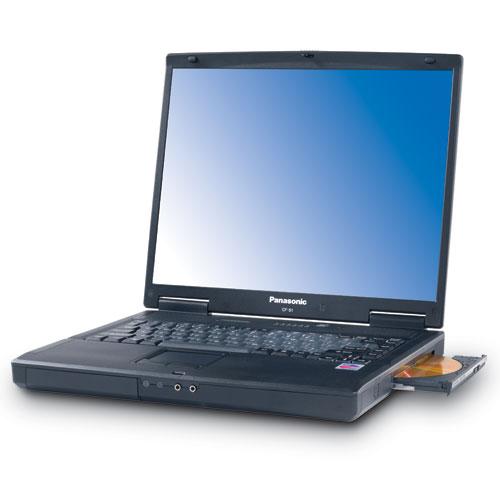
Last week, Panasonic released what it claims to be the industry's highest-performance rugged notebook, the 2GHz Toughbook CF-51, based on Intel's new Centrino mobile technology platform, with the Intel Pentium M processor 760 at 2.0GHz, a full magnesium-alloy case, an internally shock-and-drop resistant 80GB removable hard drive, 1GB Ethernet NIC 10/100/1000 support, Intel Pro/Wireless 802.11a/b/g connectivity and a 15-inch UXGA (1600x1200 pixel) TFT active-matrix color display mounted in a shock-and-vibration hardened encasement, with an estimated street price of $2,800.
For more information, visit:
http://www.panasonic.com/toughbook
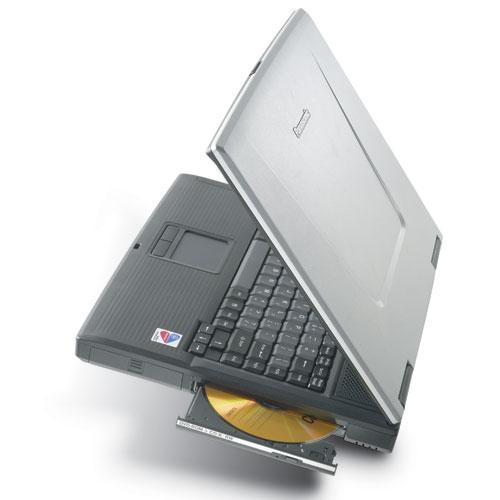
The CF-51's proprietary hard drive, mounted in shock-absorbing polymer compounds insulating the HDD from vibration and shock, is claimed to be able to withstand a four-foot drop to a solid surface — an important aspect of ruggedized computer design since according to a TBR Damage Survey, the leading causes of notebook damage are drops and spills. Flexible connectors between the hard disk drive and system board protect against the transfer of shock between these components.
I wish Apple built a ruggedized laptop. They have implemented motion sensor technology in the latest PowerBook revisions, which should certainly help prevent hard drive damage in the instance of drops and hard bumps, but while some Apple portables have been stronger than others, there has never been a real "ruggedized" PowerBook or iBook.

The metal PowerBooks especially have not distinguished themselves as tough computers. The Titanium PowerBooks are dismayingly fragile when exposed to rough treatment and the aluminum machines, while significantly more robust, have been plagued by case warpage (from heat?). As I’ve said before in this column, I think thin metal is an inferior material for laptop cases compared with good, old, tough, polycarbonate plastic, which still shrouds the iBook models.
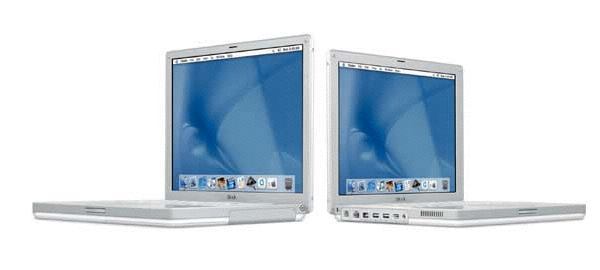
Not to say that Apple laptops are not tough in a conventional sense. Some suggest that because the internals of a laptop are "miniaturized," they must be less durable and more failure-prone than the stuff inside a full sized desktop computer, and it would seem to stand to reason that the larger internal components in a desktop Mac would be more rugged and durable than the "miniaturized" ones in a PowerBook, but that may not necessarily be the case. Because PowerBooks and iBooks are expected to receive rougher treatment than desktop Macs, their chassis, case, and internal bits are engineered to withstand bumps and shocks that would damage a desktop machine.
In my 1996 edition of Maclopedia (Hayden Books), there is a fascinating interview with then PowerBook Quality & Reliability Manager Perry Fox, in which he outlined some of the testing procedures PowerBooks were at that time subjected to, which included:
• Accelerating the lifecycle by gradually increasing the temperature in a small chamber for six weeks while inducing vibration, to find out where the product finally breaks, and what are its weakest links, and what its heat, vibration, and humidity limits are.
• Dumping Coke over the keyboard and seeing what happens in various remedial scenarios.
• Smearing the trackpad with mayonnaise and hand lotion to see how that affects performance
• Driving over test units with cars (according to Perry Fox, the 100 series and Duo PowerBooks would survive it)
• Test PowerBooks were stacked up and shaken.
Fox also noted that the Jacques Cousteau oceanographic research organization managed to drop a PowerBook overboard. It was retrieved by divers, dried out, and continued to work.
The Apple PowerBook Quality and Reliability team would also go on field trips, to see how ‘Books were treated in actual work situations, such as being tossed into the back of vans by service workers.
Now, I have no idea what sort of quality and reliability testing Apple does on PowerBooks and iBooks these days. For one thing, unlike back in the mid-’90s, when laptop engineering was all done in-house, these days a lot of it is farmed out to the subcontractors in Taiwan that build PowerBooks and iBooks for Apple, like Quanta and Alpha-Top. I assume that ruggedness testing is still done, but I somehow I doubt that it is as rigorous as the stuff Perry Fox and his team were doing back in 1996. Which, if my surmise is correct, is unfortunate, as is the fact that Apple has tipped the form vs. function saw-off too much toward form IMHO.
It’s not just the metal case material that defeats contemporary PowerBooks as “rugged” laptops. The thinness binge Apple (and most of the PC laptop manufacturers as well) have been on for the past several years has also detracted from the PowerBooks’ one-time legendary reputation for ruggedness. The Mac Web be used to be replete with anecdotes about PowerBooks absorbing amazing abuse and remaining functional, albeit sometimes with scratches or cracks.
There were many tales of PowerBook 1400s, 3400s, WallStreets, clamshell iBooks, and even Lombards and Pismos being dropped onto concrete, down flights of stairs, or sliding off the roofs of moving cars, and living to compute another day. For instance, a friend of mine once forgot to zip his PowerBook 1400's carrying case, and managed to throw the 'Book about four feet through the air before it hit the ground hard. He was surprised and delighted to find that it had sustained no apparent damage at all.
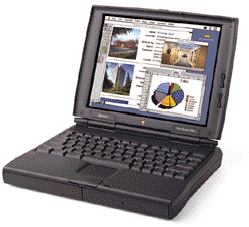
The PowerBook 1400 especially may have represented the high water mark for ‘Book ruggedness. A couple of years ago, I managed to catapult my own PowerBook 1400, open, off a Laptop Laidback stand on a bed and onto a solid oak floor -- about a three foot drop. I likewise was able to find no detectable damage, and nearly two years later that 1400 is still in daily use by my wife. Try that with an iMac or desktop PowerMac and see how "rugged" it is under such treatment!
Then there was a PowerBook 145 belonging to one of my son's customers. It had been dropped several times, and the most recent incident had caused screws holding various internal components to tear through the case, leaving loose bits rattling around inside. This was one 'Book that really should have been retired, but the owner wasn't one to give up on a prized possession just because it had sustained a bit of age and damage. My son opened it up, went out to the wood scrap pile in the backyard, found a conveniently-shaped piece of ash that he used to shore up the cracked case and anchor the loose internals to. The nearest "precision tool" at hand that day was a Skil hammer-drill, which was employed to drill new holes for the anchor screws. The PowerBook booted up fine and the customer left happy.
My son also once tripped over the power adapter cord of his Lombard PowerBook which was parked on a chair. The computer went flying across the room. The only damage was to the AC adapter plug, which was mangled. The PowerBook itself showed no apparent damage, and is still going strong for its third owner five years later. I wouldn’t care to imagine how a TiBook or even an AlBook would have fared in similar circumstances.
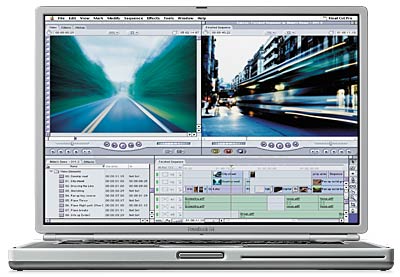
When I saw the press release photos of the Titanium PowerBook back in January, 2001, my first reaction was: “wow, this thing is way cool.” My second was: “boy, this thing looks like it would would be really easy to break.” Of course, looks can be deceiving. For example, after hefting the weight and rigidity of the big, old WallStreet, the Lombard -- Apple’s first crack at building a “slim” laptop — felt flimsy and flexible. However, the Lombard, and the successor Pismo that shares its form factor and case plastics, have proved to be commendably rugged and durable computers.
Which the TiBook is not, particularly having issues with metal fatigue around the screen hinges, but also being easily scratched and dented, and the paint chips and wears through too easily (which should not be a problem with the aluminum PowerBooks’ anodized finish). Some TiBook owners express reluctance to take their machines road warrioring for fear of damage, which kind of defeats the purpose of a portable computer.
On the other hand, I haven’t heard any horror stories about the white iBook’s case being prone to damage from rough treatment, and the earlier clamshell iBooks have an enviable reputation for robustness. The G3 dual USB (white) iBooks have had serious motherboard issues (addressed by Apple’s just-expired extended service policy), but that’s not a ruggedness problem per se. There are frequent complaints about fit and finish issues, especially how the battery fits in the case, but that’s not a ruggedness issue either.
Like Panasonic's ToughBooks, most "ruggedized" PC laptops are framed in magnesium, and some get thick rubber cladding as well. In the interest of water-resistance, some of these machines don't come with built-in speakers, while others have their speaker shielded behind a membrane. The CF-51 is actually not one of Panasonic's most extremely rugged units, but rather a stylish, fast, widescreen laptop for ordinary laptop users like my neighbor who are willing to pay a premium for some extra toughness in their machines.
The most rugged Toughbooks and other brands of ruggedized notebooks are designed designed to meet or exceed the U.S. military's MIL-STD-810F test standards that measure levels of environmental reliability. The MIL-STD-810F specifications cover a broad range of tests that measure the durability of equipment used under harsh conditions. These standards include drop, shock, moisture, dust and vibration-resistance, exposure to extremely low and high temperatures, and others.
Some police forces have discovered that ordinary laptop computers may last as little as a week on the job, while "ruggedized" units last substantially longer, although the Panasonic units reportedly have some difficulty surviving if they the pavement from the top of a police cruiser it it is traveling at more than 30 miles per hour.
Truly "ruggedized" laptops are a niche market base Apple obviously hasn't got covered, but I can't help thinking of an iBook or PowerBook in, say, olive drab or gunmetal gray with a weatherproofed keyboard, display and ports, sitting in the back of a military HumVee or police cruiser, or alternatively one in nautical red, white, and blue livery running GPS and navigation software in, say, the cockpit of the winner of the Bermuda sailboat race, or even a Panasonic CF-51 style "toughened" Apple laptop for users like me.
In the meantime, the perception at least that polycarbonate iBooks are more forgiving of thumps and bumps than metal PowerBooks is another factor that tips the value scale in favor of the iBook from my perspective.
The PowerBook Mystique Mailbag
Image scanners
Pismo and Lombard screen swap
Pismo love
From Robert Carian
I read your article regarding the EPSON's Perfection 4870 Photo scanner. I am trying to decide on this scanner or the Dimage.
I want to get all my photos into iPhoto. I did not see this final step in your article. Am I to understand that after you import the image into whatever app you are using for color correction etc, you then save it to desktop and import it to iPhoto, of do any of these scanners bring the image directly into iPhoto?
Hi Robert;
I guess this would be a software issue. I have iPhoto but don't use it, so didn't experiment, but to the best of my knowledge none of the scanning applications I used with either scanner supports direct export into iPhoto.
You infer correctly that I save scans directly to disk, work on them with image editing software, and then store them in standard folders. If I recall correctly, you can import folders of images into iPhoto.
Charles
From Iain McShane
Hi Charles,
Read your articles on your Pismo experiences and upgrades, I'm in a similar boat using a Pismo G3 400Mhz as my main machine, I bumped the RAM to 768M and installed a 80G 5400RPM Hard drive. I don't really need the horsepower of a Ti or Al PowerBook although I did have a Ti 667Mhz a few years ago.
Anyway, I bought a Lombard 400 new in '99 and have just got it back from storage, I have noticed the screen is so much brighter than the LCD on my Pismo.
I have stripped earlier Powerboks for screen swaps, including 145b, 520c and recently a 5300.
Just wondering if you know if the Lombard and Pismo LCD OR LCD backlight are swappable.
Cheers,
Iain
Hi Iain;
My deductive guess would be that they are, but I don't know that for a fact, so you should check with a service tech who can give you a definitive answer before proceeding.
Another option would be to replace the backlight tube in the Pismo, which is the likely culprit in the screen dimness, Backlight Cold Cathode Fluorescent Lamps (CCFL's) for backlighting in laptop computers areavailable relatively inexpensively.
A major supplier of replacement Cold Cathode Fluorescent Lamps (CCFL's) is JKL Lamps, a wholesale jobber that sells in minimum quantities of 100 units. However, JKL CCFl Lamps are available as individual units form from Digikey. http://digikey.com/ The JKL part number for the 2mm x 292mm Pismo-compatible replacement CCFL is: BF20292-24B.
For more information, visit:
President and Technical Director for JKL Components Corporation Joseph S. Velas also offers some tips on laptop backlight lamp replacement in an article entitled "A Bright Outlook for Laptop Users with Dark, Dim Displays," pub. ECN magazine 2004:
JKL Lamps have been used for replacements in laptops/LCD's manufactured by Apple, AST, Canon, Compaq, Data World, Dell, DTK, Epson, Everex, Gateway, Goldstar, Hyperdata, IBM, Mitsubishi, Sharp, Swan, Texas Instruments, Toshiba, and Zenith Data Systems. To find your replacement lamp, JKL recommends that you measure the physical characteristics of your old lamp(see diagram below) and find the closest match on the Fluorescent Lamps Page or identify the manufacturer and the manufacture model number off the back of the LCD screen within the laptop and email it to sales@jkllamps.com .
For more information, visit:
If you decide to try replacing the backlight, a reader over at Macopinion, Alex Mathew, who has done it, offers the following tips:
http://www.jkllamps.com/laptop.cfm
http://reed-electronics.com/ecnmag/article/CA414994
http://www.jkllamps.com/
2. The actual lamp removal (after opening the LCD) is too complicated to document - but if Peter has experience with disassembly of the pismo, its probably ok.
3. The lamp sits at the bottom of the LCD panel - in a groove thats covered by a metal plate - the trick is to remove the metal plate cover and remove the lamp without disconnecting the LCD cables completely - visually examine the lamp mounting - and removing the metal cover will become evident.
4. The lamp is set in place with glue!! - so after removing the cover, the first instinct is pull it out - dont! - the map will flex while still being attached at the bottom and - poof- it breaks. Carefully dislodge the lamp from the rubber-like glue.
5. The old lamp is "threaded" through a rubber end cap - again this has to be repeated with the new one - lots of patience while doing this.
6. Soldering and desoldering is required - so get a good iron with good flux, solder and desoldering wick.
7. Buy atleast TWO or more new lamps - you will break one!! You can sell the unused ones back on ebay.
8. Keep a digital camera handy and take lots of pictures during the disassembly, you will need it later!
Charles1. The length of the lamp (a 2mm diameter fluorescent light) is extremely critical. Make sure the new one matches the old one exactly (within 2mm). However, to know the exact length, you have to remove the old one without breaking it - its tough.
From Mike Parker
Hi!
I bought a Pismo over ebay last summer. Very clean, perfect screen, 400MHz G3, 1 GB RAM, 10GB HD, 2 good batteries and an Airport Card for $600 + $50 shipping. I installed an Hitachi 80GB HD to give me some room for video editing. I'm running FCP 3 and it works like a charm, albeit slightly slow when it comes to rendering. I'm planning on buying the DayStar G4/550 upgrade so I can run FCP 4 and probably the DVD-RW drive as well.
It really is a fabulous computer and is gorgeous to look at. As long as I can get parts for it, I plan to hang on to it. It's a keeper.
Mike Parker
Hi Mike;
Fabulous indeed. I'm keeping mine forever, regardless of whatever faster hardware I eventually upgrade to. Right now, it meets my needs well with the 550 MHz G4 processor.
Charles